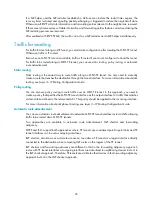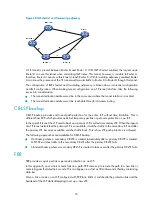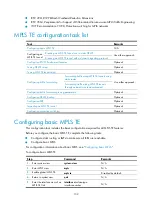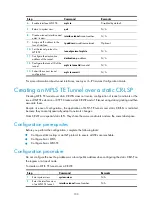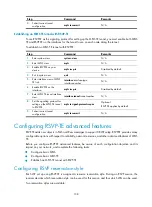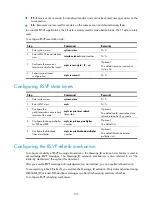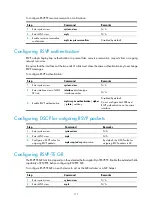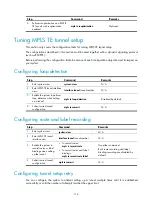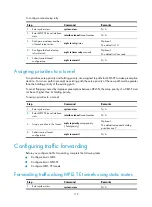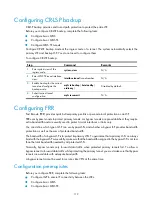
106
Step Command
Remarks
4.
Enter OSPF area view.
area
area-id
N/A
5.
Enable MPLS TE in the OSPF
area.
mpls-te enable
Disabled by default.
6.
Exit to OSPF view.
quit
N/A
Configuring IS-IS TE
Configure IS-IS TE if the routing protocol is IS-IS and a dynamic signaling protocol is used for MPLS TE
tunnel setup. If both OSPF TE and IS-IS TE are available, OSPF TE takes priority.
The IS-IS TE extension uses the sub-TLV of IS reachability TLV (type 22) to carry TE attributes. Before
configuring IS-IS TE, configure the IS-IS wide metric style, which can be wide, compatible, or
wide-compatible.
According to RFC 3784, the length of the IS reachability TLV (type 22) may reach the maximum of 255
bytes. For an IS-IS LSP to carry this type of TLV and to be flooded normally on all IS-IS enabled interfaces,
the MTU of any of the interfaces cannot be less than 284 bytes (including 27 bytes of LSP header and two
bytes of TLV header). If an LSP must also carry the authentication information, the minimum MTU needs
to be recalculated according to the packet structure. Because of these reasons, when TE is configured, set
the MTU of each IS-IS enabled interface to be equal to or greater than 512 bytes to guarantee that IS-IS
LSPs can be flooded on the network.
For more information about IS-IS, see
Layer 3—IP Routing Configuration Guide
.
To configure IS-IS TE:
Step Command
Remarks
1.
Enter system view.
system-view
N/A
2.
Enter IS-IS view.
isis
[
process-id
] N/A
3.
Configure the wide metric
attribute of IS-IS.
cost-style
{
narrow
|
wide
|
wide-compatible
| {
compatible
|
narrow-compatible
}
[
relax-spf-limit
] }
By default, IS-IS uses narrow metric
style.
4.
Enable IS-IS TE.
traffic-eng
[
level-1
|
level-2
|
level-1-2
]
Disabled by default.
NOTE:
IS-IS TE does not support secondary IP address advertisement. With IS-IS TE enabled on an interface
configured with multiple IP addresses, IS-IS TE advertises only the primary IP address of the interface
through the sub-TLV of IS reachability TLV (type 22). H3C recommends avoiding enabling IS-IS TE on an
interface configured with secondary IP addresses.
Configuring an MPLS TE explicit path
An explicit path is a set of nodes. The relationship between any two neighboring nodes on an explicit
path can be either strict or loose.
•
Strict
—The two nodes are directly connected.
•
Loose
—The two nodes have devices in between.







